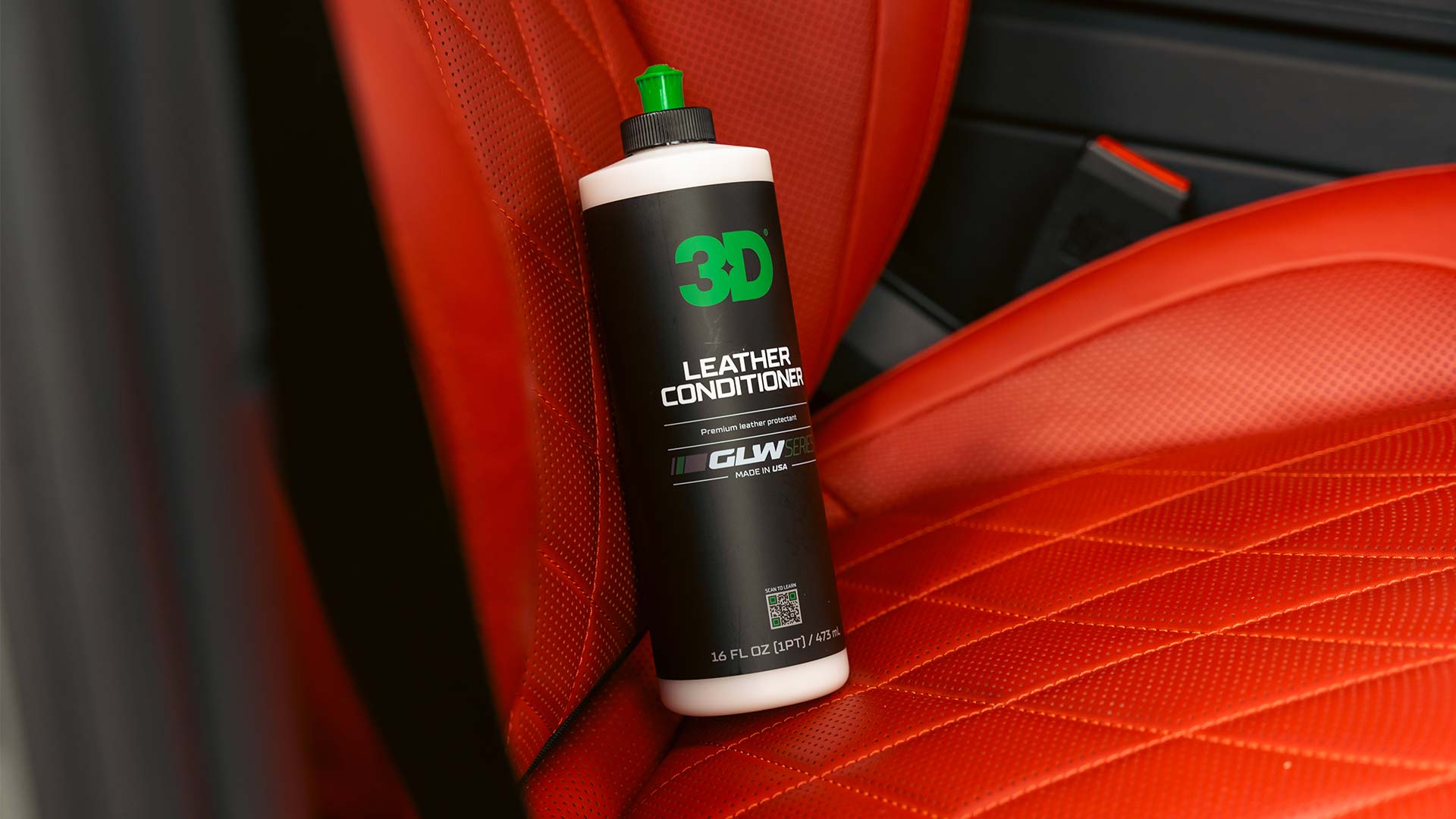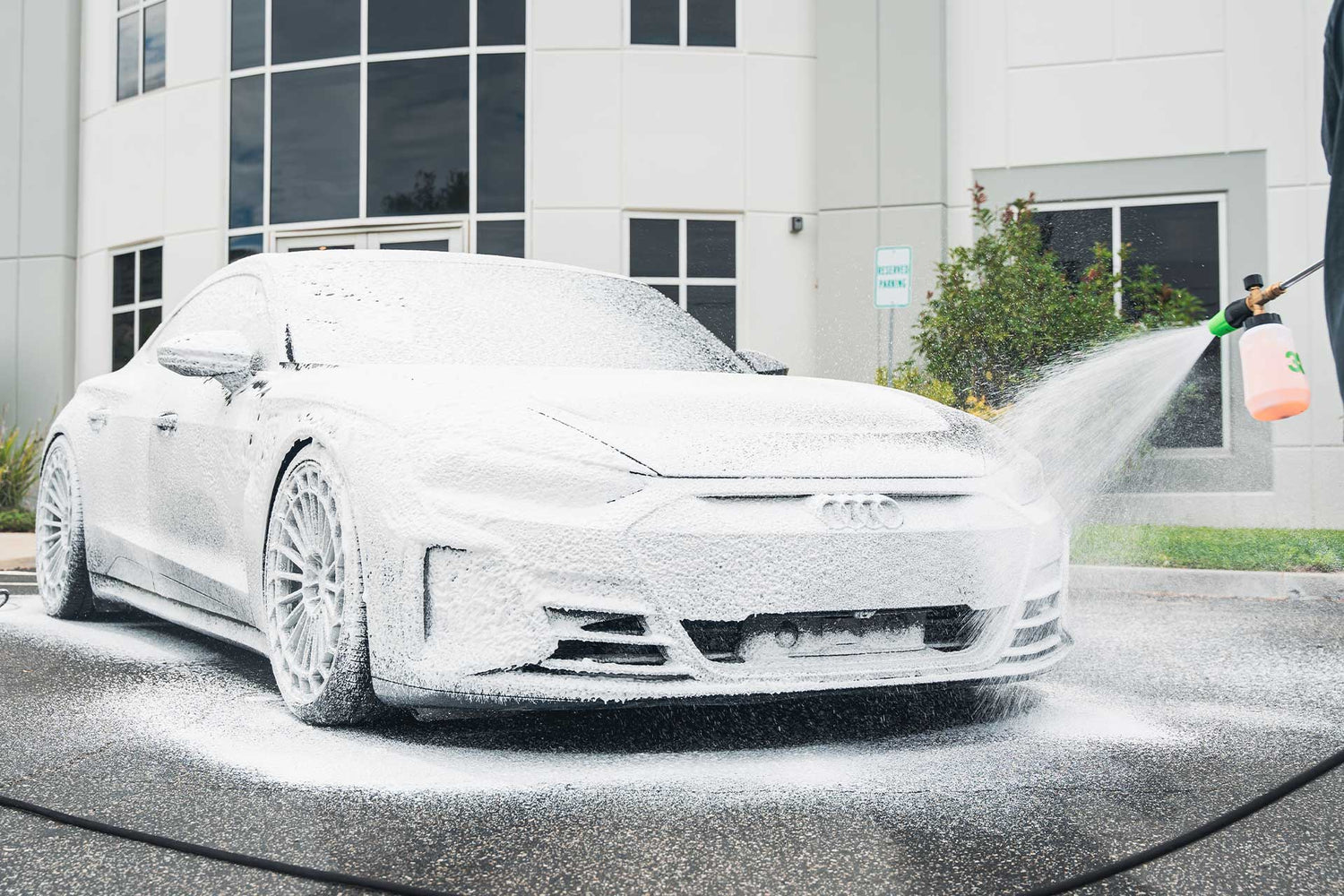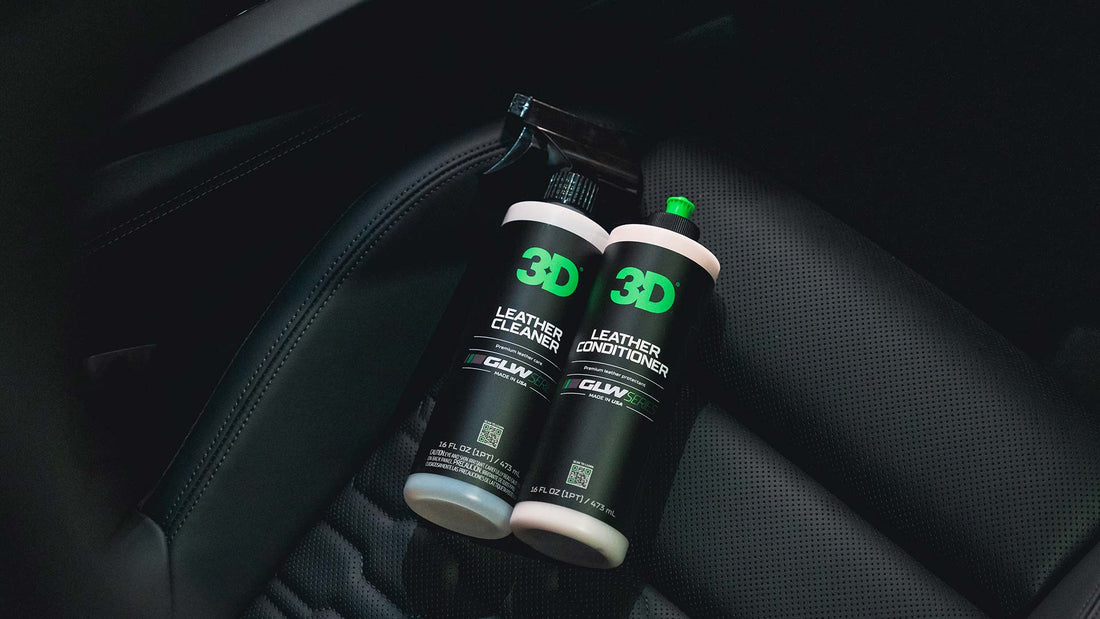
How to Clean Leather Car Seats
Share
Leather car seats are a luxurious addition to any vehicle, but they require proper care and maintenance to retain their pristine look and feel. In this article, we will walk you through the best practices for cleaning, conditioning and protecting your leather car seats, plus all the other leather upholstered interior pieces, ensuring they stay in top condition for years to come. Whether you're dealing with surface dirt, grime, or specific stains, The 3D detailing experts have got you covered with tips and techniques to help you keep your leather car seats looking as good as new.
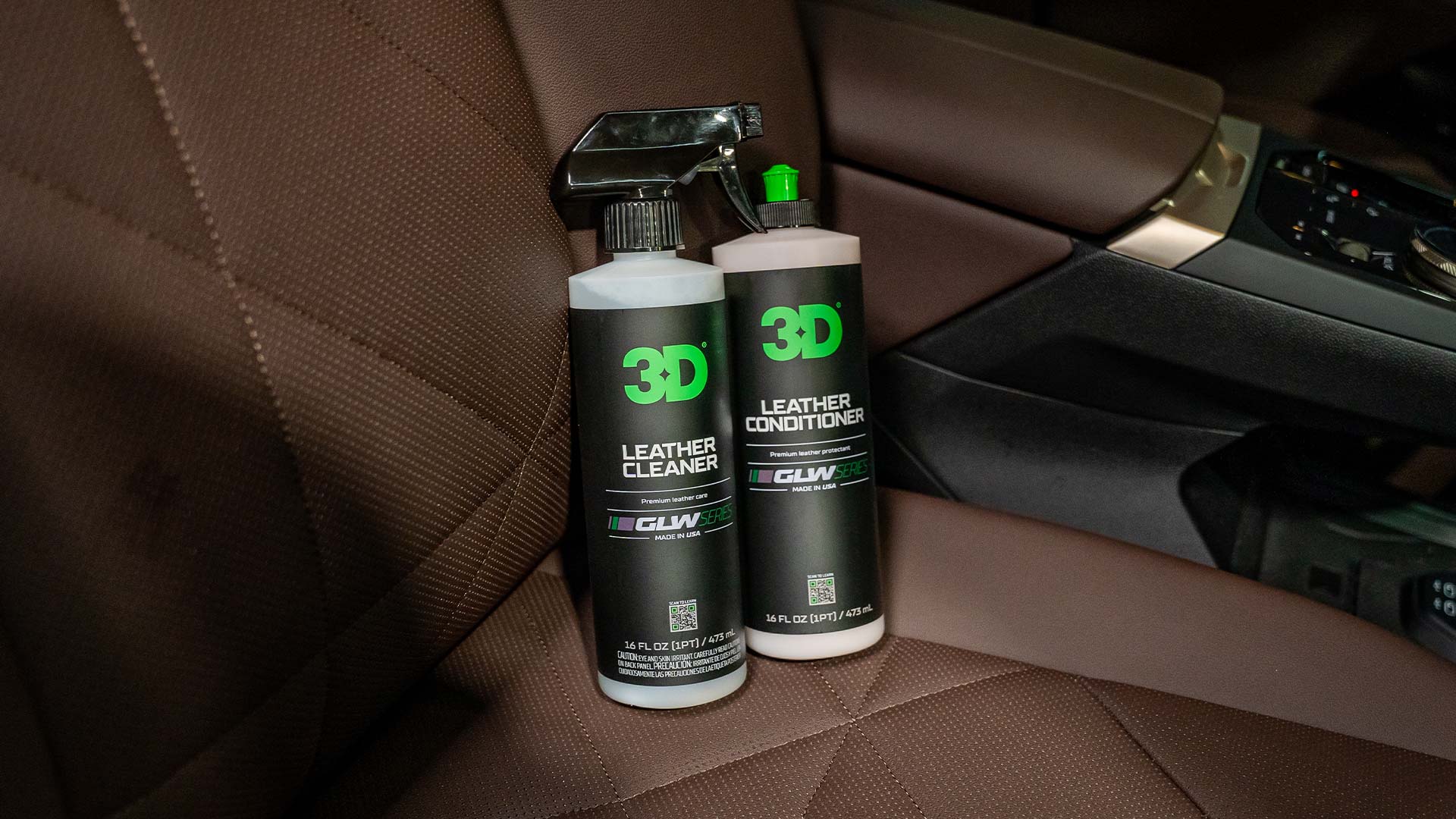
Types of Leather Used in Cars
The types of leather commonly used in car seats include:
- Chrome-Tanned Leather: This type of leather represents a balance between look, cost, and durability over time. It is resistant and suitable for covering large surfaces, offering characteristics of greater comfort, breathability, and resistance compared to traditional fabric seats.
- Aniline Leather: Commonly referred to as Nappa Leather, aniline leather comes from the best hides and is very lightly painted with natural dyes, allowing the natural creases and scars of the animal to remain visible. It is soft and luxurious to the touch, and is usually found in higher-end cars.
- Semi-Aniline Leather: This is the most popular leather used for car seats nowadays. It undergoes buffing to remove scars and other marks, coating to give it a uniform look, and embossing to provide it with a leather-like appearance. It is durable and more economic compared to aniline leather.
- Pigmented Leather: Also referred to as coated or protected leather, it is the most versatile type of leather used in car upholstery, thanks to the synthetic coat that goes over the hide. It retains its natural dark tan and offers a balance between cost and looks.
- Leatherette: Otherwise known as faux leather, is a synthetic material made to look like leather. It is cheaper than genuine leather but lacks the luxurious look and feel of its natural counterpart. It’s often coated with PVC or polyurethane, which lasts significantly longer than real leather.
- Vinyl: Although not classified as leather, vinyl is commonly used in car seats and upholstery as an alternative to leather. Do not use a leather cleaner or conditioner to clean vinyl seats. Instead, opt for a quality vinyl cleaner and vinyl conditioner.
Understanding the type of leather used in your car seats and upholstery is crucial for choosing the correct cleaning and conditioning methods to maintain their appearance and longevity. If you’re unsure about what type of leather is used in your vehicle, it’s best to refer to the owner's manual or visit the manufacturers website.
How Do Leather Car Seats Get Damaged?
Leather car seats can get damaged due to various factors, such as excessive heat and UV rays, extreme cold temperatures, spills and stains, debris and dirt, body oils and sweat, harsh cleaning products, lack of cleaning and conditioning or neglect, and of course, regular wear and tear. Regular cleaning, conditioning, and protective measures are essential to preserve the appearance and longevity of leather car seats upholstery.
How to Clean Leather Car Seats & Leather Upholstery
So you’ve determined the type of leather used in your vehicle, but what products do you use? Luckily, 3D Car Care has just released an exceptional new line of products that make cleaning leather car seats and upholstery easier than ever: the 3D GLW Series. Specifically, the 3D GLW Leather Cleaner and the 3D GLW Leather Conditioner.
Using a super simple two-step solution, you can bring your leather back to life. Let’s jump into it.
Cleaning With 3D GLW Leather Cleaner
3D GLW Leather Cleaner uses a balanced pH formula that is specifically designed to remove ingrained dirt from all types of leather. It is gentle enough for regular use, but strong enough to penetrate pores and remove grime, body oils, and even denim dye transfer without drying out the material. The contaminants are trapped in the solution and can be wiped away safely.
To use the 3D GLW Leather Cleaner on lightly soiled leather correctly, spray it directly onto a clean microfiber cloth and wipe over the surface. For heavier soiling, spray it directly onto the leather surface and agitate it with a detailing upholstery brush. Then, wipe it clean with a fresh microfiber towel.
This can be repeated on all leather surfaces, including dashboards, shift knobs and more.
*Pro Tip: If the seats are perforated, spray onto a microfiber towel directly and wipe gently. To remove the product, blot the surface rather than wiping. If the perforations are clogged, gently agitate them with a brush.
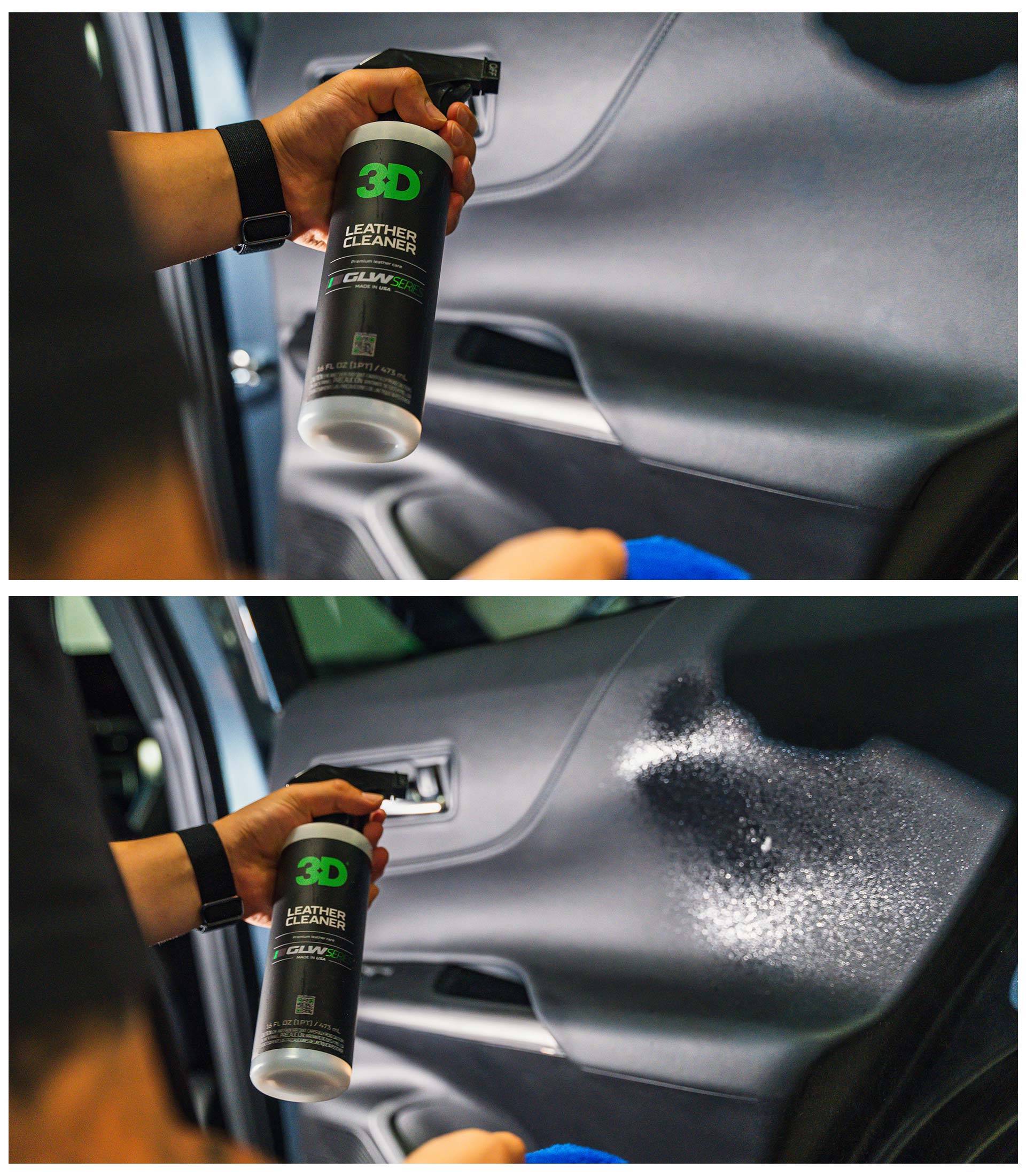
Conditioning With 3D GLW Leather Conditioner
3D GLW Leather Conditioner is a conditioner and UV protectant in one bottle. It’s designed to bring all leather surfaces, seats included, back to life. By infusing essential nourishment, this conditioner replenishes the natural oils that leather tends to lose over time due to wear and tear, environmental factors, and exposure to sunlight. This proactive approach prevents leather from becoming dry, cracked, or brittle, ensuring its longevity and maintaining its luxurious look and feel.
To use the 3D GLW Leather Conditioner, simply apply it to an applicator pad and gently work it into the surface, making sure every inch is covered. Depending on how old or damaged the current condition of the leather is, you can let the product cure for a few minutes before wiping it away.
*Pro-Tip: Follow the same steps mentioned in the leather cleaner section for perforated seats.
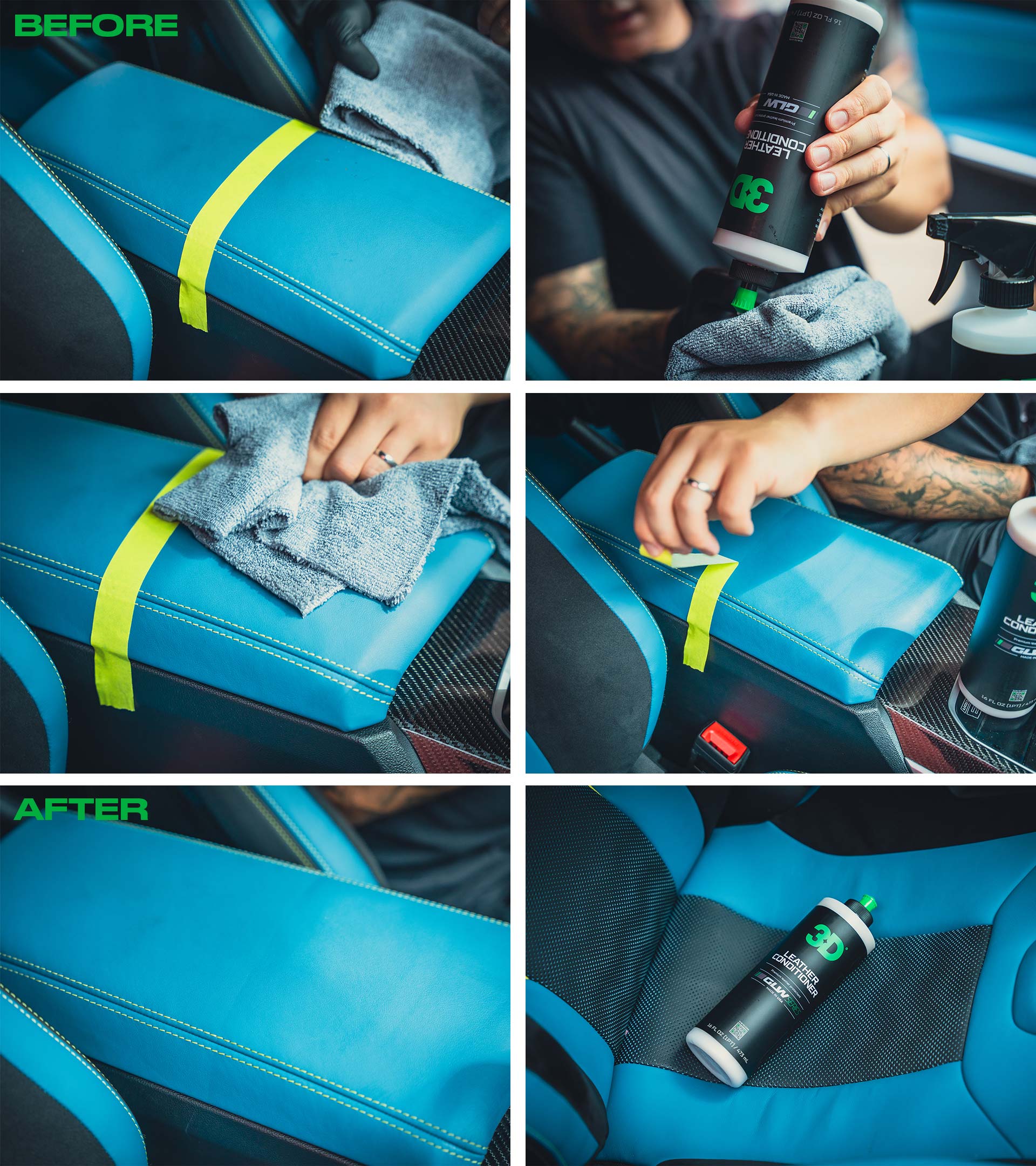
Leather Car Seat & Leather Upholstery Maintenance
The best way to keep your newly cleaned and conditioned leather seats and upholstery is to regularly clean and condition them. Unfortunately, you can’t avoid normal wear and tear, especially if the car is a daily driver. The 3D detailing experts suggest creating a schedule to give your leather some TLC. We recommend using a leather cleaner when needed, such as when stains or spills occur, and using a leather conditioner at least once every six months.
